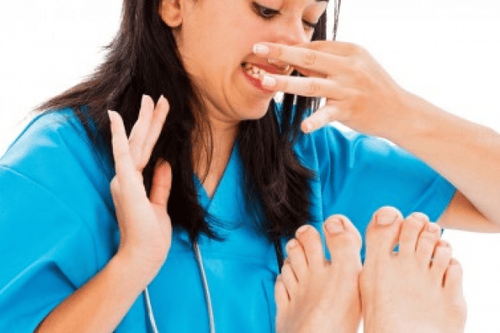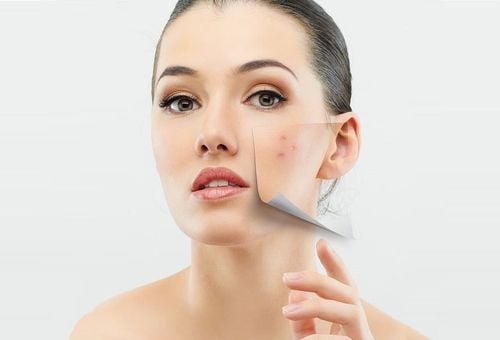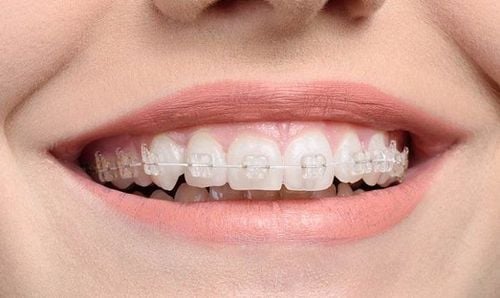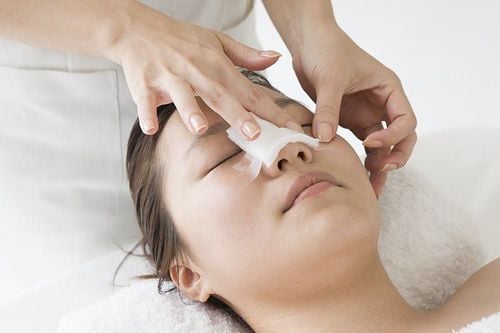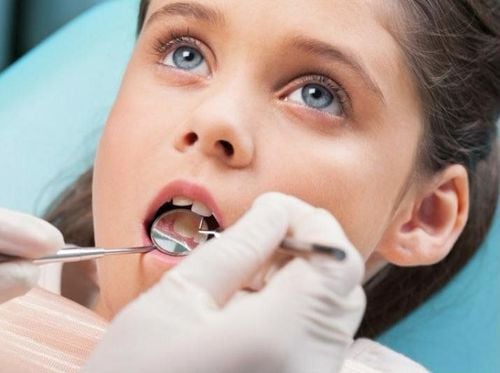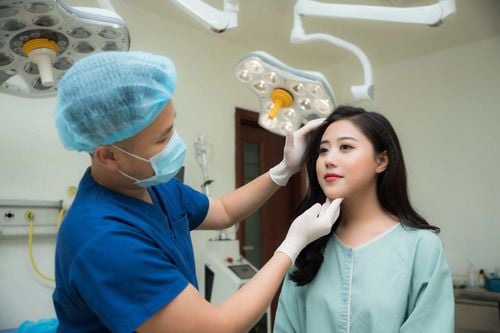This is an automatically translated article.
Our feet have to move about 5,000 steps a day, equivalent to 2.5 miles. In addition, the legs also have to bear the weight of the body in each step. We stuff our feet into our shoes and put pressure on them for a long time. Because foot care is a must-do, especially for hard-working feet.1. Basic principles in foot care
Similar to other parts, you should not neglect your feet, even for a day. Check them daily for cuts, sores, swelling, or signs of an infected toenail. Clean them with warm water, but avoid soaking your feet for too long as this can dry out the skin of your feet.Moisturize them every day with lotion, or mineral oil. Do not apply moisturizer between your toes. The skin between the toes should be kept dry to prevent infection.
Avoid shoes that are too tight. Your shoes should not hurt your feet. Flip-flops and flats should be avoided as they do not provide enough arch support. Switch between the shoes you have so you don't have to wear the same pair for days.
Trim toenails neatly and straight. Then, use an emery board or nail file to smooth out the corners, which will prevent the ingrown nail from piercing your skin.
2. How to take care of smooth white foot skin
Some foot skin problems need to be recognized and treated promptly to bring a smooth white skin.Calluses Calluses are thick, hard patches of skin on your feet. If you have calluses on your feet, you may find it painful to walk or wear shoes. They often appear from too much rubbing, such as wearing shoes that are too tight, or too much pressure on your feet, such as from standing for long periods of time or from a sport like running. Calluses usually appear on the soles of the feet.
Mild calluses and bumps usually do not require treatment and will clear up on their own. But there are some things you can do to help them disappear faster like:
Wear thick socks to protect your skin. Use a pumice stone to rub the callus while in the tub or shower. Use spacers to relieve pressure. Apply salicylic acid to help dissolve the callus. Be sure to follow the instructions carefully so as not to damage healthy skin. Never use acid treatments on your feet if you have diabetes. Wear the foot orthotic as directed. If you have diabetes, don't try to treat calluses on your own. It is always important to see a doctor, especially when the calluses are painful. They may recommend changing shoes or adding cushioning to the shoes. Your doctor may even be able to scrape the calluses off. If you have a lot of pain, cortisone injections or, in some cases, surgery may be part of the treatment plan.
Since irritation and rubbing are the main causes of calluses, there are a few simple ways you can help prevent them, including:
Wear shoes that fit your feet. Avoid wearing high heels every day. Use gel insoles to reduce rubbing and pressure on your feet. Sweaty feet No one knows exactly what causes some people to have sweaty feet, also known as hyperhidrosis. It can be familial. Most people sweat when it's hot, but people with hyperhidrosis can sweat at any time. Hyperhidrosis is more common in men than women and in young people. Stress, medications, and hormonal changes can also cause the body to sweat more.

Để chăm sóc một đôi chân nhiều mồ hôi, bạn nên mang vớ thấm mồ hôi
Let's start with proper foot hygiene:
Wash your feet with antibacterial soap. Make sure to clean between your toes. Dry your feet and sprinkle cornstarch, foot powder, or antifungal powder on your feet. Wear sweat-wicking socks. Change socks as often as possible during the day. If sweaty feet don't improve, see your doctor. Treatment options include prescription antiperspirants, Botox injections, iontophoresis (a treatment that temporarily clogs sweat glands), and surgery. There is a new topical medication called Qbrexa (Glypyrronium) that can be used to block local sweating.
Foot odor The two main causes are sweaty feet and your shoes. When your sweat mixes with the bacteria in your shoes and socks, it creates an odor. Some remedies to help reduce foot odor include:
Wash your feet daily with warm water with mild soap. Dry them thoroughly. Use baby powder or specialized vacuum cleaner. You can also try applying an antibacterial ointment. Change your socks and shoes at least once a day. Avoid wearing the same shoes 2 days in a row. Wear comfortable shoes Soak your feet in strong black tea (two tea bags per liter of water, boiled for 15 minutes and mixed with 2 liters of cold water) 30 minutes a day for a week. Or use a solution of one part vinegar and two parts water. Warts on the skin of the feet Warts are small hard patches of skin caused by viruses. They can be painful, especially when they develop on the bottom of your foot. The most common cause of foot warts is walking on dirty, wet surfaces without shoes. If the virus touches your skin, it can enter through the wound so small that you don't even notice it. The result may be a wart that appears, hard, flat, and gray or brown in color.
Do not attempt to treat warts on your own. Your doctor can remove the wart with a laser or with minor surgery, or using liquid nitrogen or a prescription topical medication. Although there are many over-the-counter wart treatments available, they should only be used if advised by your doctor. You could accidentally mistake a wart for something like skin cancer and delay proper treatment. In addition, some gels and liquids contain acids or over-the-counter chemicals that can destroy healthy tissue. If you have diabetes, heart disease or a circulatory disorder, you should never use these treatments.
Prevent the appearance of warts by the following methods:
Wear flip-flops in public bathrooms, changing rooms and pool areas. Change your shoes and socks every day. Keep feet dry because warts thrive in high humidity. Do not touch other people's warts or warts on other parts of the body. Tinea capitis This is a disease that often occurs in athletes. It's caused by a fungus that grows in warm, dark, humid environments (for example, locker rooms, showers, and swimming pool locker rooms). Your bare feet come into contact with the fungus, which then takes up residence on your feet. Symptoms include dry skin, itching and burning, scaling, inflammation, blisters and cracking of the skin. It spreads easily, especially to the soles of your feet and toenails. You can also spread the infection to other areas of your body just by scratching and then touching. You can even get tinea pedis from bed sheets or clothing that come in contact with the fungus.
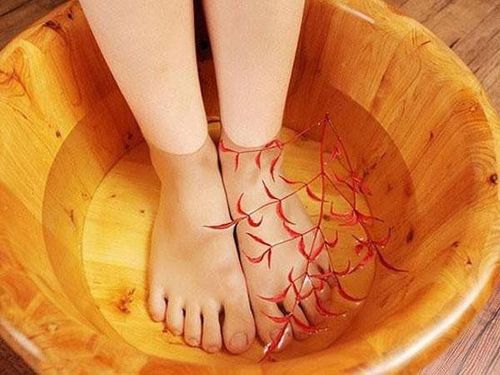
Ngâm chân trong nước ấm có thể giúp bạn giảm đau do bị nấm da chân
Ways to prevent athlete's foot from recurring:
Wash your feet daily with soap and water. Be sure to dry between your toes. Avoid going barefoot in public places. Keep your feet dry. If your feet sweat, use talcum powder and wear breathable shoes, like leather shoes. Wear moisture-wicking socks and if you have a thick sweater on your feet, change your socks often.
Please dial HOTLINE for more information or register for an appointment HERE. Download MyVinmec app to make appointments faster and to manage your bookings easily.
Reference source: loccitane.com



